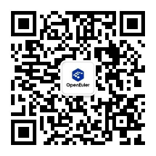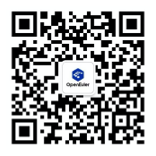Image Management
Container Image Management
Logging In to a Registry
Description
The isula login command is run to log in to a registry. After successful login, you can run the isula pull command to pull images from the registry. If the registry does not require a password, you do not need to run this command before pulling images.
Usage
isula login [OPTIONS] SERVER
Parameters
For details about the parameters in the login command, see Appendix > Command Line Parameters > Table 1 login command parameters.
Example
$ isula login -u abc my.csp-edge.com:5000
Login Succeeded
Logging Out of a Registry
Description
The isula logout command is run to log out of a registry. If you run the isula pull command to pull images from the registry after logging out of the system, the image will fail to be pulled because you are not authenticated.
Usage
isula logout SERVER
Parameters
For details about the parameters in the logout command, see Appendix > Command Line Parameters > Table 2 logout command parameters.
Example
$ isula logout my.csp-edge.com:5000
Logout Succeeded
Pulling Images from a Registry
Description
Pull images from a registry to the local host.
Usage
isula pull [OPTIONS] NAME[:TAG]
Parameters
For details about the parameters in the pull command, see Appendix > Command Line Parameters > Table 3 pull command parameters.
Example
$ isula pull localhost:5000/official/busybox
Image "localhost:5000/official/busybox" pulling
Image "localhost:5000/official/busybox@sha256:bf510723d2cd2d4e3f5ce7e93bf1e52c8fd76831995ac3bd3f90ecc866643aff" pulled
Deleting Images
Description
Delete one or more images.
Usage
isula rmi [OPTIONS] IMAGE [IMAGE...]
Parameters
For details about the parameters in the rmi command, see Appendix > Command Line Parameters > Table 4 rmi command parameters.
Example
$ isula rmi rnd-dockerhub.huawei.com/official/busybox
Image "rnd-dockerhub.huawei.com/official/busybox" removed
Adding an Image Tag
Description
Add an image tag.
Usage
isula tag SOURCE_IMAGE[:TAG] TARGET_IMAGE[:TAG]
Parameters
For details about the parameters in the tag command, see Appendix > Command Line Parameters > Table 8 tag command parameters.
Example
isula tag busybox:latest test:latest
Loading Images
Description
Load images from a .tar package. The .tar package must be exported by using the docker save command or must be in the same format.
Usage
isula load [OPTIONS]
Parameters
For details about the parameters in the load command, see Appendix > Command Line Parameters > Table 5 load command parameters.
Example
$ isula load -i busybox.tar
Load image from "/root/busybox.tar" success
Listing Images
Description
List all images in the current environment.
Usage
isula images [OPTIONS]
Parameters
For details about the parameters in the images command, see Appendix > Command Line Parameters > Table 6 images command parameters.
Example
$ isula images
REPOSITORY TAG IMAGE ID CREATED SIZE
busybox latest beae173ccac6 2021-12-31 03:19:41 1.184MB
Inspecting Images
Description
After the configuration information of an image is returned, you can use the -f parameter to filter the information as needed.
Usage
isula inspect [options] CONTAINER|IMAGE [CONTAINER|IMAGE...]
Parameters
For details about the parameters in the inspect command, see Appendix > Command Line Parameters > Table 7 inspect command parameters.
Example
$ isula inspect -f "{{json .image.id}}" rnd-dockerhub.huawei.com/official/busybox
"e4db68de4ff27c2adfea0c54bbb73a61a42f5b667c326de4d7d5b19ab71c6a3b"
Two-Way Authentication
Description
After this function is enabled, iSulad and image repositories communicate over HTTPS. Both iSulad and image repositories verify the validity of each other.
Usage
The corresponding registry needs to support this function and iSulad needs to be configured as follows:
Modify iSulad configuration (default path: /etc/isulad/daemon.json) and set use-decrypted-key to false.
Place related certificates in the folder named after the registry in the /etc/isulad/certs.d directory. For details about how to generate certificates, visit the official Docker website:
Run the systemctl restart isulad command to restart iSulad.
Parameters
Parameters can be configured in the /etc/isulad/daemon.json file or carried when iSulad is started.
isulad --use-decrypted-key=false
Example
Set use-decrypted-key to false.
$ cat /etc/isulad/daemon.json
{
"group": "isulad",
"graph": "/var/lib/isulad",
"state": "/var/run/isulad",
"engine": "lcr",
"log-level": "ERROR",
"pidfile": "/var/run/isulad.pid",
"log-opts": {
"log-file-mode": "0600",
"log-path": "/var/lib/isulad",
"max-file": "1",
"max-size": "30KB"
},
"log-driver": "stdout",
"hook-spec": "/etc/default/isulad/hooks/default.json",
"start-timeout": "2m",
"storage-driver": "overlay2",
"storage-opts": [
"overlay2.override_kernel_check=true"
],
"registry-mirrors": [
"docker.io"
],
"insecure-registries": [
"rnd-dockerhub.huawei.com"
],
"pod-sandbox-image": "",
"image-opt-timeout": "5m",
"native.umask": "secure",
"network-plugin": "",
"cni-bin-dir": "",
"cni-conf-dir": "",
"image-layer-check": false,
"use-decrypted-key": false,
"insecure-skip-verify-enforce": false
}
Place the certificate in the corresponding directory.
$ pwd
/etc/isulad/certs.d/my.csp-edge.com:5000
$ ls
ca.crt tls.cert tls.key
Restart iSulad.
systemctl restart isulad
Run the pull command to download images from the registry:
$ isula pull my.csp-edge.com:5000/busybox
Image "my.csp-edge.com:5000/busybox" pulling
Image "my.csp-edge.com:5000/busybox@sha256:f1bdc62115dbfe8f54e52e19795ee34b4473babdeb9bc4f83045d85c7b2ad5c0" pulled
Importing rootfs
Description
Import a .tar package that contains rootfs as an image. Generally, the .tar package is exported by running the export command or a .tar package that contains rootfs in compatible format. Currently, the .tar, .tar.gz, .tgz, .bzip, .tar.xz, and .txz formats are supported. Do not use the TAR package in other formats for import.
Usage
isula import file REPOSITORY[:TAG]
After the import is successful, the printed character string is the image ID generated by the imported rootfs.
Parameters
For details about the parameters in the import command, see Appendix > Command Line Parameters > Table 9 import command parameters.
Example
$ isula import busybox.tar test
sha256:441851e38dad32478e6609a81fac93ca082b64b366643bafb7a8ba398301839d
$ isula images
REPOSITORY TAG IMAGE ID CREATED SIZE
test latest 441851e38dad 2020-09-01 11:14:35 1.168 MB
Exporting rootfs
Description
Export the content of the rootfs of a container as a TAR package. The exported TAR package can be imported as an image by running the import command.
Usage
isula export [OPTIONS] [ID|NAME]
Parameters
For details about the parameters in the export command, see Appendix > Command Line Parameters > Table 10 export command parameters.
Example
$ isula run -tid --name container_test test sh
d7e601c2ef3eb8d378276d2b42f9e58a2f36763539d3bfcaf3a0a77dc668064b
$ isula export -o rootfs.tar d7e601c
$ ls
rootfs.tar
Embedded Image Management
Loading Images
Description
Load images based on the manifest files of embedded images. The value of --type must be set to embedded.
Usage
isula load [OPTIONS] --input=FILE --type=TYPE
Parameters
For details about the parameters in the load command, see Appendix > Command Line Parameters > Table 5 load command parameters.
Example
$ isula load -i test.manifest --type embedded
Load image from "/root/work/bugfix/tmp/ci_testcase_data/embedded/img/test.manifest" success
Listing Images
Description
List all images in the current environment.
Usage
isula images [OPTIONS]
Parameters
For details about the parameters in the images command, see Appendix > Command Line Parameters > Table 6 images command parameters.
Example
$ isula images
REPOSITORY TAG IMAGE ID CREATED SIZE
busybox latest beae173ccac6 2021-12-31 03:19:41 1.184MB
Inspecting Images
Description
After the configuration information of an image is returned, you can use the -f parameter to filter the information as needed.
Usage
isula inspect [options] CONTAINER|IMAGE [CONTAINER|IMAGE...]
Parameters
For details about the parameters in the inspect command, see Appendix > Command Line Parameters > Table 7 inspect command parameters.
Example
$ isula inspect -f "{{json .created}}" test:v1
"2018-03-01T15:55:44.322987811Z"
Deleting Images
Description
Delete one or more images.
Usage
isula rmi [OPTIONS] IMAGE [IMAGE...]
Parameters
For details about the parameters in the rmi command, see Appendix > Command Line Parameters > Table 4 rmi command parameters.
Example
$ isula rmi test:v1
Image "test:v1" removed










